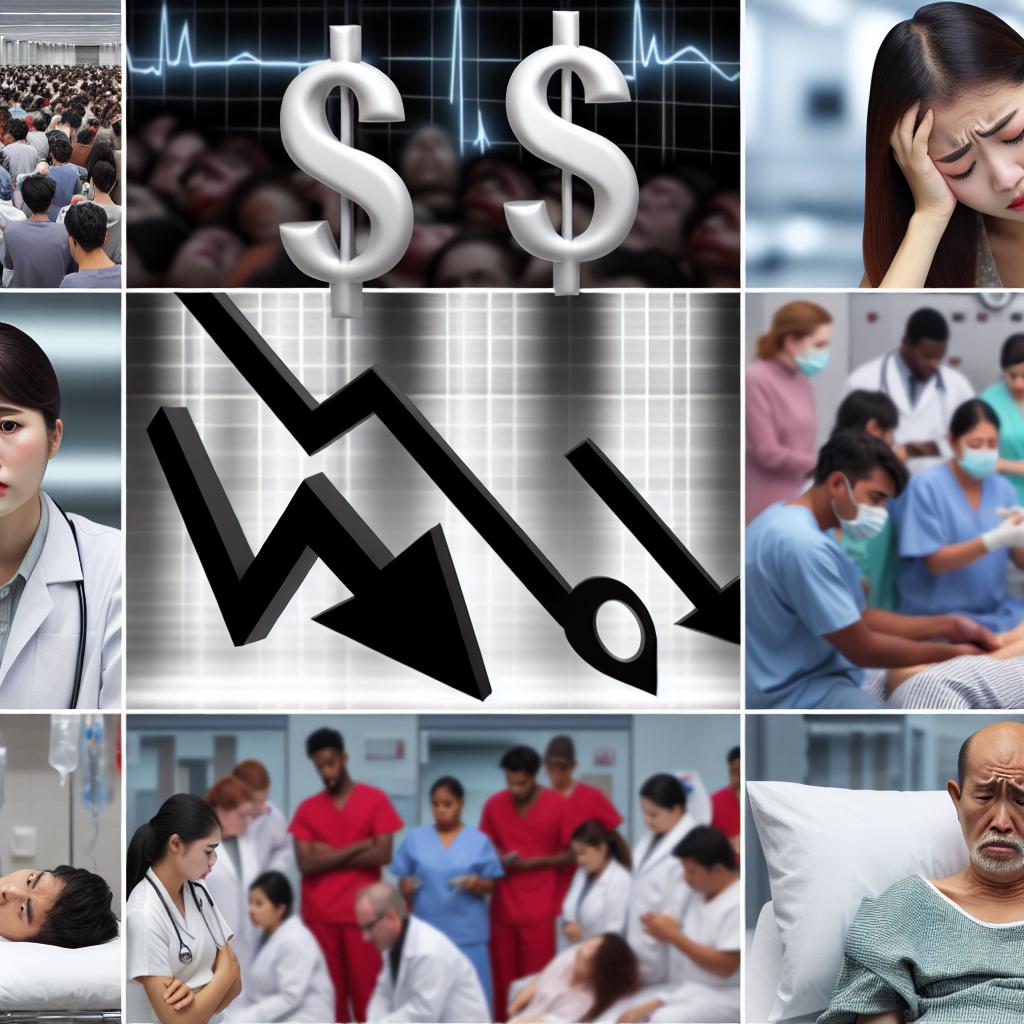The Economic Impact of Illegal Drug Use on Healthcare Systems
The economic ramifications of illegal drug use extend well beyond individual health concerns, posing a substantial financial challenge to healthcare systems around the world. This burden emerges from an increased demand for medical treatments, the costs associated with drug rehabilitation programs, and the expenses tied to drug-related illnesses and injuries. Understanding these complexities is crucial for implementing effective strategies to alleviate the healthcare systems’ financial pressure.
Increased Demand for Medical Treatment
Illegal drug use frequently leads to both acute and chronic health issues, which often require medical interventions. Emergency room visits are particularly common among users due to a variety of factors such as overdoses, accidents, and drug-related complications. These incidents put significant pressure on healthcare resources and significantly increase the economic costs associated with maintaining healthcare services.
The intensive nature of these medical treatments requires immediate attention and use of resources, stretching emergency services to their limits. In many healthcare facilities, resources are diverted to manage the immediate crises presented by drug-induced conditions, impacting the treatment of other patients in need.
Chronic Health Conditions
Among illegal drug users, chronic health conditions like cardiovascular diseases, liver dysfunctions, and infections such as HIV/AIDS and hepatitis are notably prevalent. Treating these conditions involves continuous medical surveillance, testing, and sometimes long-term medication, all of which contribute to substantial healthcare expenditures over time.
Chronic conditions demand frequent healthcare interactions, including hospital visits, consultations, and routine follow-ups, making them a significant part of the healthcare system’s financial burden. This continuous requirement for care places a strain on healthcare infrastructure, necessitating additional funding and resources.
Cost of Drug Rehabilitation Programs
The economic burden of illegal drug use is further augmented by the costs associated with drug addiction treatment. Drug rehabilitation programs, which encompass stages of detoxification, inpatient care, counseling, and prolonged support, are crucial for patient recovery but are inherently costly. Public healthcare systems and private insurers typically shoulder a portion of these expenses, thereby deepening the financial impact on the healthcare system.
Beyond immediate intervention, rehabilitation programs strive to provide long-term healing, tackling various aspects such as mental health and social reintegration. Despite their comprehensive nature, these programs require significant fiscal investment to ensure accessibility and effectiveness.
Prevention and Education Efforts
Preventive measures and educational campaigns form a crucial part of responding to illegal drug use. These initiatives are geared towards reducing drug usage rates and informing the public about the associated risks. While they are necessary to mitigate drug misuse, they represent a substantial financial commitment due to the costs involved in developing and executing public awareness campaigns.
Prevention programs focus on curtailing drug initiation and promoting healthy lifestyles, aiming to reduce the future demand for healthcare resources. However, the financial inputs required for such preventive measures are significant and form an integral part of the healthcare system’s budget allocation.
Drug-Related Illnesses and Injuries
Illegal drug use significantly contributes to numerous injuries and health problems necessitating both urgent and often prolonged medical care. Instances of impairment-related accidents, violent behavior, and consequential property damage all add to the healthcare system’s financial obligations.
The need to treat drug-related injuries and associated violence creates a cycle of continuous demand for healthcare services. Often requiring specialized care, these incidents can lead to longer hospital stays and the need for extensive medical treatment, which inevitably heightens healthcare expenditures.
Healthcare Resource Allocation
The necessity to allocate resources for addressing issues derived from illegal drug use can deplete the availability of resources for other healthcare services. This reallocation can lead to overcrowding in medical facilities and increase waiting times for treatments, thus indirectly raising healthcare costs due to inefficiencies in service delivery.
Efficient resource allocation is vital to ensure that the demand created by drug-related health issues does not detract from the overall quality of healthcare services offered to the general population. Strategies that focus on streamlined resource distribution are crucial in managing this balance.
Efforts to Mitigate Economic Costs
To address the economic burden posed by illegal drug use, governments and healthcare organizations are deploying various strategies aimed at reducing the associated financial pressures. These strategies emphasize enhancing access to healthcare services, boosting research funding, and fostering improved coordination among healthcare providers.
Additionally, innovative approaches such as incorporating technology in healthcare processes are being explored to improve efficiency and effectiveness in treating drug-related conditions. Further detailed initiatives can be discovered on recognized health platforms.
International Collaboration
Combating the global challenge of drug-related economic costs requires robust international collaboration. Such cooperation encompasses sharing best practices, facilitating cross-border healthcare initiatives, and amassing international funds for drug prevention and treatment programs.
Through uniting resources and knowledge, international efforts emphasize strengthening global capacities to address the complexities and financial burden of illegal drug use. This collaborative approach accentuates the importance of a united global front in developing sustainable solutions.
The multifaceted issue of illegal drug use and its consequential economic toll on healthcare systems necessitates joint global efforts. Although notable progress is being made in mitigating these costs, the financial burden remains a formidable challenge for policymakers and healthcare providers alike. Continuous assessment and strategic adaptation are essential to effectively manage and eventually reduce the economic impact illegal drug use imposes on healthcare infrastructures worldwide.





